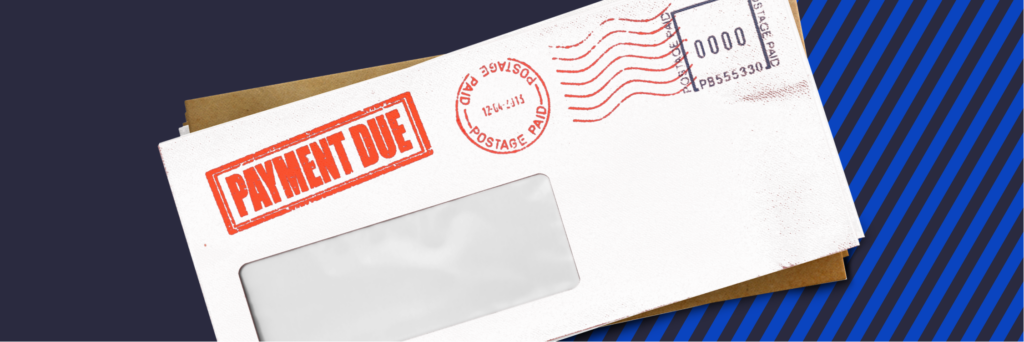Debt doesn’t have to be the norm in your life. If you’re ready to get out of debt and need an extra boost, here are 12 ways to jumpstart your repayment:
1. Make peace with your debt
First things first: as much as we might want it to, debt doesn’t disappear. It’s an unwelcome guest that only gets worse if ignored. It can be tough to face your finances head on, but knowledge is also empowering. When you hold an honest and informed view of your personal finances you can be more strategic in the ways that you balance them. It’s totally OK to think that your debt is a bummer, but after that, you have to push yourself to ask, “So what am I going to do about it?”
2. Create a plan of action
Take control of your debt repayment by creating a plan that you’ve set rather than simply following the suggestions of your bank or lender. Of course you want to make sure you’re making your payments on time, but there’s a big mental difference between looking at a paper bill with your remaining balance and looking at a calendar you’ve made yourself.
When you lay everything out in your plan, you’ll know how much longer you’ve got to go and when you’ve hit major benchmarks (like paying down a quarter or half of your debt). In addition to clarifying and understanding your debt (which can be a big mental victory all on its own), your plan can help you understand how to structure payments, and when and where you can afford to pay a little extra to reach the end even sooner.
3. Set small goals
A goal could be as small as funneling an extra $20 into your debt repayment or successfully avoiding an impulse purchase. It’s not necessarily the monetary aspect that’s most important. It’s the knowledge that you do have a say over your personal finances. Small victories are just as important as the end goal!
4. Identify spending vacuums and work to restructure
Take a look at your spending habits. Take note of where you can adjust to save more or to spend less. Unpacking your habits and pinpointing where there’s room for improvement or change will help you to understand where to place your focus. Once you have a clear idea of the foundation you’re working with, you have insight into how you can fortify that structure.
5. Write down your accomplishments
There’s a huge value in writing down your daily financial “wins.” Not only will it help you keep track of something positive in your debt repayment, these wins can show you the bright spots of your financial plan. Drawing patterns between positive actions and the results they achieve can help you adjust your habits and make it that much easier to stay on track.
6. Share with your friends
There’s something incredibly powerful about accountability. Sharing your progress with friends illustrates that you’re not alone. Accountability can also help you feel as if others have a stake in your success. If they have similar financial goals, they can also benefit from the accountability as well. There’s nothing like a little bit of social pressure to keep your head in the game!
7. Find your best learning medium
We all learn in different ways – which is why it’s so important to identify exactly what method you respond to best when tracking your repayment. Are you visual? Do you respond to a rewards system? Do spreadsheets make you cringe or nerd out?
Following personal finance bloggers can help you to see that not all people approach personal finances in the same way. Browse around to find some of your faves and you’ll be exposed to a supportive community that supports your learning style!
8. Set up bi-monthly payments
Bi-monthly payments give you an extra payment within the calendar year. This shaves off time and interest on your loan repayment. The best part? It doesn’t require much more energy than simply creating a new payment schedule. Punching in the numbers will show you the powerful impact of switching up your repayment schedule, and automating these bi-monthly payments will take the work off your plate.
9. Incrementally increase payments
Increasing your payments doesn’t mean you have to triple them in a single day. Sometimes, you only have a single, lonely dollar bill left over at the end of the month. Put it towards your repayment anyway. Though it might not seem like much in the beginning, these small adjustments make a difference! You can raise your monthly payments over time with small incremental increases.
10. Funnel windfalls into your debt repayment
Consider windfalls as a raise and use that financial advantage to gain even more control over your repayment. It’s tempting to think of large sums of cash as “extra” spending cushions, but they represent an opportunity to help speed up your debt repayment or build a savings buffer. If you can resist the temptation to spend, you’ll have an incredible opportunity to hack away at the principal balance and cut down on the overall interest costs of the loan.
11. Pick up side income
If you’re still struggling to find ways to cut back on saving, then boost your earnings by picking up a small job here or there. There’s no shortage of opportunities and many don’t require a long-term time commitment!
12. Automate
Worrying about your finances can be stressful enough without having to worry about missing a payment when life gets busy. If you can automate your repayments, then you can free up your time and attention for other parts of your life. Automating your payments and credit monitoring will help you to take control of your finances without having to expend extra energy in the process.
Debt repayment isn’t about being perfect all the time! Seize opportunities to excel in different financial corners instead of focusing on past errors. Implementing a new tactic could be the very thing that helps you take control of your repayment and kick debt to the curb even faster!




